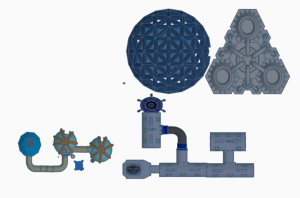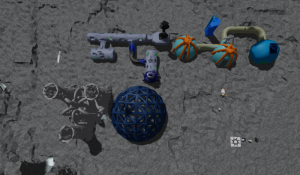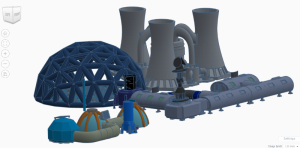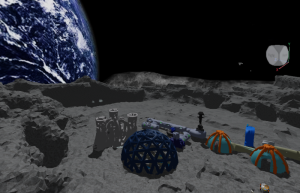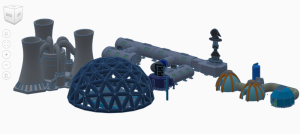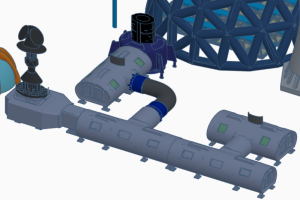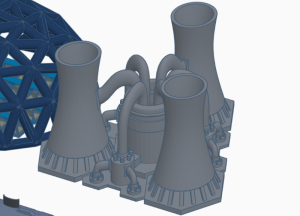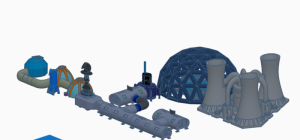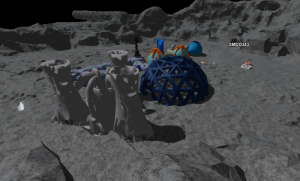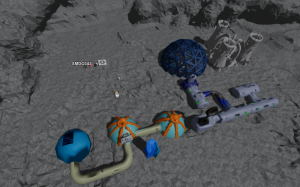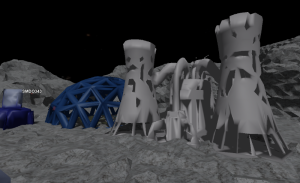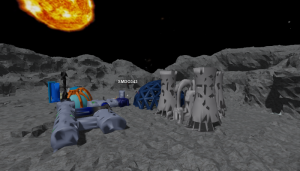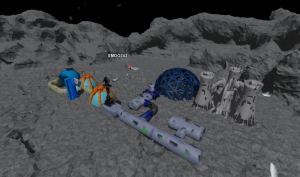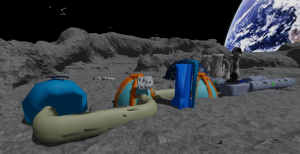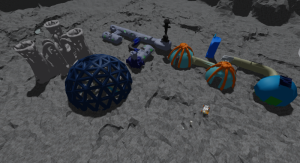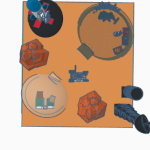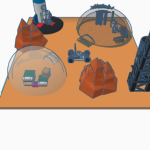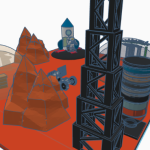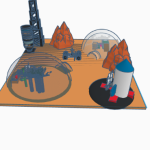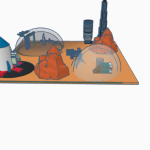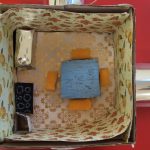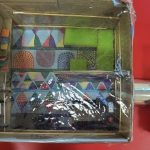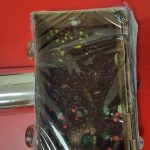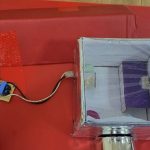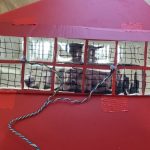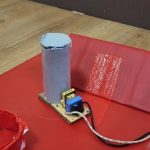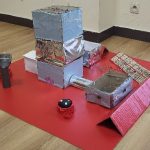El habitat de la esperanza by Paradox Rivera
Fire Hunters Escobedo-Nuevo Leon Mexico 10 years old, 13 years old 2 / 1 Spanish Moon
Project description
Hábitat Lunar Sostenible
Un hábitat artificial en la Luna representa un desafío monumental de ingeniería y
sostenibilidad. Imaginemos un entorno donde los seres humanos puedan vivir y
trabajar, protegidos de las extremas condiciones de la Luna.
Yo y mi hermana hicimos en equipo una propuesta para un hábitat que pueda ser
sostenible en la Luna, para lograr esto tuvimos que hacer diversas investigaciones,
tales como cuales serían las mejores estrategias para la construcción del hábitat,
cuales serían los materiales más viables para la construcción de esta, a continuación,
presento los resultados:
Una de las opciones que encontramos más viables para la construcción de ciertas
estructuras, como edificios o casas es el Regolito Lunar Solidificado, esto
básicamente es el polvo que se encuentra en abundancia en la superficie Lunar, por
lo tanto no tendríamos que desperdiciar peso en transportar los materiales de aquí a
la luna, aparte de que esta especie de roca cuando se funde se convierte en un
material bastante resistente al calor y condiciones extremas de la luna, un
inconveniente que encontramos es que este polvo llega a ser toxico para los
humanos, por lo tanto ideamos la solución de cubrir las estructuras hechas con este
material de algún polímero no toxico, tal como el Ácido Itacónico que se puede
mezclar con el plástico y crear un recubrimiento en el interior.
Otra propuesta es usar biorreactores de algas para fomentar el crecimiento y tener
un poco de fauna en la luna, ya que actualmente existe un proceso por el que se
puede crear comida con suficientes nutrientes a partir de algas, también nos gustaría
implementar criaderos de insectos, como gusanos de Maguey u hormigas, ya que
son una de las fuentes más grandes de proteína que existe.
Nuestra base se colocaría sobre la superficie lunar, aprovechando la luz solar
constante cerca de los polos y utilizando el regolito lunar como aislante y protección
contra la radiación y micro meteoritos. La estructura sería plegable, para minimizar el
peso de los materiales transportados desde la Tierra.
El sistema de ventilación del hábitat utilizaría tecnología avanzada para reciclar el
aire, extrayendo el dióxido de carbono y reemplazándolo con oxígeno generado por
plantas cultivadas en invernaderos hidropónicos integrados. Estos invernaderos no
solo proporcionarían oxígeno sino también alimentos frescos, contribuyendo a la
autosuficiencia del hábitat.
La energía necesaria para la ventilación y otros sistemas vitales provendría de
paneles solares de alta eficiencia y de la conversión de recursos lunares en
combustible. La ubicación estratégica del hábitat permitiría un acceso casi constante
a la luz solar, evitando la larga noche lunar de 14 días terrestres.
El diseño interior del hábitat sería modular, con secciones dedicadas a la
investigación, la vida cotidiana y el ocio. Las áreas comunes estarían equipadas con
sistemas de realidad aumentada para mantener el bienestar psicológico de los
ocupantes, permitiéndoles experimentar entornos terrestres virtuales. También
tendría un gimnasio para que los músculos de los astronautas no se atrofien.
El hábitat estaría equipado con sistemas redundantes para garantizar la
supervivencia en caso de fallos técnicos. Además, la estructura inflable estaría
diseñada para sellarse automáticamente en caso de perforación, preservando la
atmósfera vital dentro del hábitat.
El hábitat no sería solo un refugio contra los elementos lunares, sino un hogar que
fomentaría la colaboración y la innovación. Sería un paso significativo hacia la
presencia humana permanente fuera de la Tierra.
Project link
https://sofia-paulo-moon-camp.my.canva.site/sofia-paulo-moon-camp
English translation
Sustainable Lunar Habitat
An artificial habitat on the Moon represents a monumental engineering and
sustainability. Let’s imagine an environment where human beings can live and
work, protected from the extreme conditions of the Moon.
As a team, I and my sister made a proposal for a habitat that could be
sustainable on the Moon, to achieve this we had to do various research,
such as what would be the best strategies for habitat construction,
What would be the most viable materials for its construction, then
I present the results:
One of the options that we find most viable for the construction of certain
structures, such as buildings or houses is the Solidified Lunar Regolith, this
basically it is the dust that is found in abundance on the lunar surface, for
Therefore we would not have to waste weight transporting the materials from here to
the moon, apart from the fact that this type of rock when melted becomes a
material quite resistant to heat and extreme conditions of the moon, a
The drawback that we found is that this dust becomes toxic to humans.
humans, therefore we devised the solution of covering the structures made with this
material of some non-toxic polymer, such as Itaconic Acid that can be
Mix with the plastic and create a coating on the inside.
Another proposal is to use algae bioreactors to promote growth and have
some fauna on the moon, since currently there is a process by which
can create food with sufficient nutrients from algae, we would also like
implement insect breeding grounds, such as Maguey worms or ants, since
They are one of the greatest sources of protein that exists.
Our base would be placed on the lunar surface, taking advantage of sunlight
constant near the poles and using the lunar regolith as insulation and protection
against radiation and micro meteorites. The structure would be foldable, to minimize the
weight of materials transported from Earth.
The habitat ventilation system would use advanced technology to recycle the
air, removing carbon dioxide and replacing it with oxygen generated by
plants grown in integrated hydroponic greenhouses. These greenhouses do not
would not only provide oxygen but also fresh food, contributing to the
habitat self-sufficiency.
The energy needed for ventilation and other vital systems would come from
high-efficiency solar panels and the conversion of lunar resources into
fuel. The strategic location of the habitat would allow almost constant access
in sunlight, avoiding the long lunar night of 14 Earth days.
The interior design of the habitat would be modular, with sections dedicated to the
research, daily life and leisure. The common areas would be equipped with
augmented reality systems to maintain the psychological well-being of
occupants, allowing them to experience virtual terrestrial environments. Also
It would have a gym so that the astronauts’ muscles do not atrophy.
The habitat would be equipped with redundant systems to ensure the
survival in case of technical failures. Furthermore, the inflatable structure would be
designed to automatically seal in the event of a puncture, preserving the
vital atmosphere within the habitat.
The habitat would not only be a refuge from the lunar elements, but a home that
would encourage collaboration and innovation. It would be a significant step towards
permanent human presence outside the Earth.
Project video
#
3D Design #
Other
Other Projects



